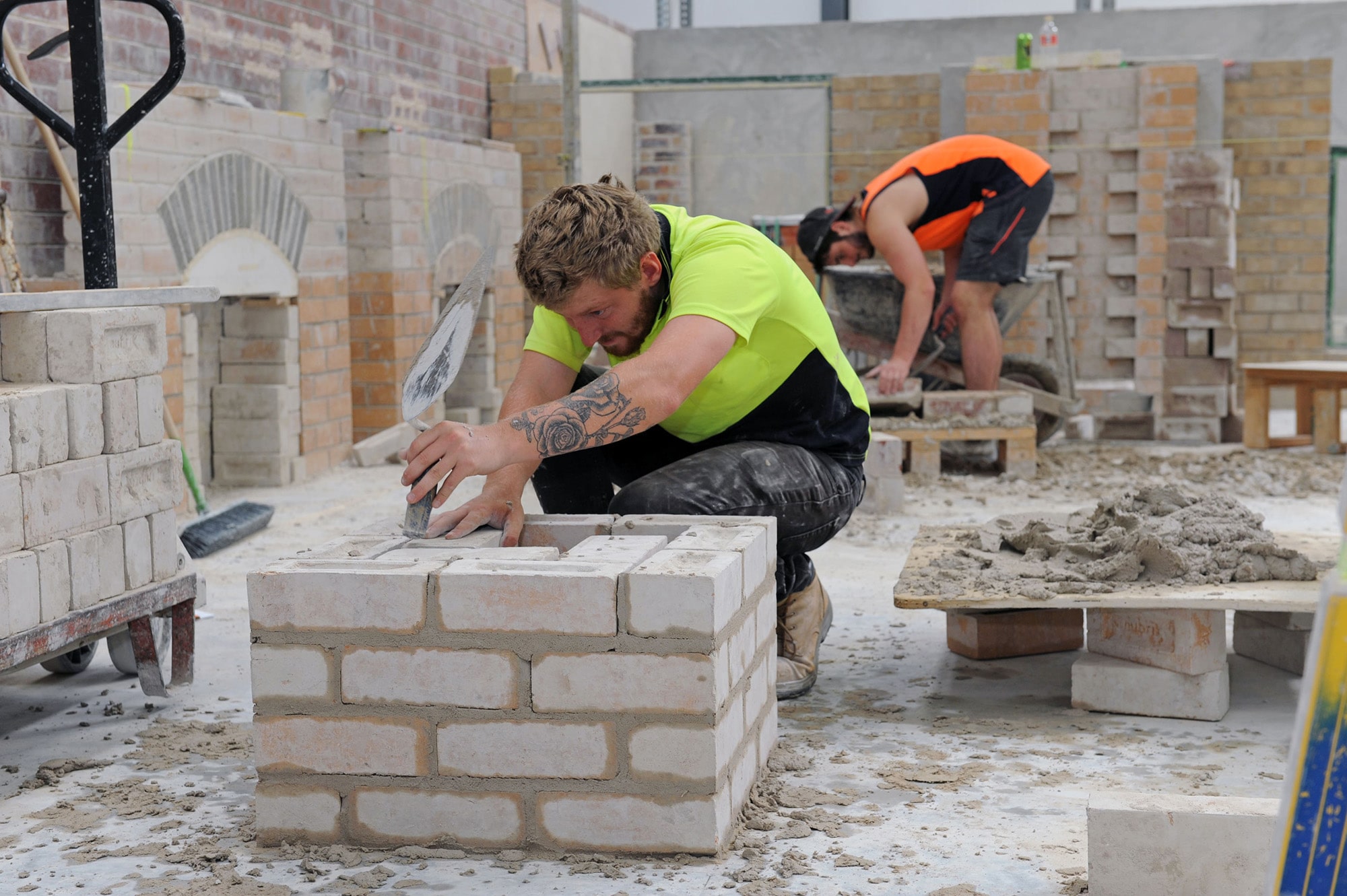The Buzz on Bricklayer Auckland
Wiki Article
About Bricklayer Auckland
Table of ContentsThe Best Strategy To Use For Bricklayer AucklandThe Definitive Guide for Bricklayer AucklandBricklayer Auckland Things To Know Before You BuyAll about Bricklayer AucklandHow Bricklayer Auckland can Save You Time, Stress, and Money.The Facts About Bricklayer Auckland Revealed
Blocks ought to constantly be stacked on planks; never ever load them straight on uneven or soft ground. Do not save bricks on scaffolds or runways.Except where stacked in sheds, brick heaps should never be even more than 7 feet high. When a heap of block gets to a height of 4 feet, it should be tapered back 1 inch in every foot of elevation over the 4-foot level. The tops of brick stacks should be kept degree, and also the taper have to be kept during unpiling operations.
Structural bond refers to just how the private stonework systems interlock or connect together into a single architectural device. You can attain structural bonding of brick and tile walls in one of the following 3 means: Overlapping (interlocking) the stonework units. Installing steel incorporate linking joints. Utilizing cement to adhere surrounding wythes of masonry.
Not known Facts About Bricklayer Auckland
Pattern bond describes the pattern formed by the masonry devices and mortar joints on the face of a wall surface (Bricklayer Auckland). The pattern might arise from the architectural bond, or it may be purely ornamental and unrelated to the structural bond. Number 4-4 shows the 6 standard pattern bonds in usual use today.The running bond is the easiest of the 6 patterns, containing all cots. Because the bond has no headers, steel connections normally form the structural bond. The running bond is made use of mainly in dental caries wall surface building and construction, brick veneer walls, and facing ceramic tile walls made with additional broad stretcher ceramic tile.
Great blocks need to not break down when placed in water. Just when fat lime or clay mortar is utilized or when one is forced to use bricks that are not well burnt, this soaking rule has actually to be loosened up.
The Main Principles Of Bricklayer Auckland
In all cases, blocks should not be handled in baskets or in any kind of other setting which will certainly destroy the intensity of their edges. Exactly how do you build a masonry wall surface? The operation of bricklaying in common basic job is as follows. A layer of mortar is infected cover the complete width of the wall for an ideal size of the reduced course.
Ultimately, we press the side bulging mortar in strongly to be level with the face of the wall surface if it is to be left unplastered. In the usual practice adopted by many see page masons, a row of bricks is very first positioned on a thin layer of bed mortar leaving the cross joints empty.


The walls are increased genuinely plumb. All training courses are laid absolutely straight and also all upright joints truly upright.
The 6-Second Trick For Bricklayer Auckland
For this objective, a wood straight side with college graduation giving a density of each block course consisting of joint can be made use of for advice. For a thick wall, the above procedure is repeated together with both faces of the wall and also the interior loading blocks for the thick wall are stocked a similar fashion.
This procedure of loading open joints is called flushing-up. It is mistakenly omitted for a number of courses on some badly-executed tasks and just done afterwards (not after every program) in an inefficient way. It is not an excellent method and needs to be prevented as it is vital that every training course should be purged approximately the degree if great job is required.

Little Known Facts About Bricklayer Auckland.
The mortar climbing and loading the vertical joints totally and develops an exceedingly strong and strong wall surface. This is recognized as larrying. For a rat trap bond work (as in the construction of dental caries i was reading this wall surfaces), if the mortar is placed thoughtlessly on the brick, some of it will certainly fall under the tooth cavities as well as will certainly be thrown away.The face of the brickwork will additionally be cleansed of all mortar droppings, and so on(ii) When situations make it necessary to lug on a part of a building in irregular programs, the job shall be constructed back (according to the bond utilized on the work) at an angle not steeper than 45 levels so regarding make certain an uniform and also effective bonding.
Or else, for faces to be plastered, completing click reference of the face joints ought to be accomplished as talked about in listed below (This is extremely important.)(iv) The wall surfaces should be consistently raised around not leaving any type of component one metre (three feet) less than the other - Bricklayer Auckland. A day's job ought to not be greater than 1.
Some Known Details About Bricklayer Auckland
When the facework is to be later plastered or the joints alone are to be pointed, the joints must be raked while the wall surface is being built. Bricklayer Auckland. It needs to be raked to a minimum depth of 12 mm by a raking device throughout the progress of the job itself, when the mortar is still green.
If plastering or pointing is not imagined, the joints should be struck flush as well as completed at the time of laying itself, as currently mentioned. Half-brick wall surfaces tend to break unless care is absorbed its construction. Brickwork in half-brick stonework is to be executed with cots in 1: 5 mortar.
Report this wiki page